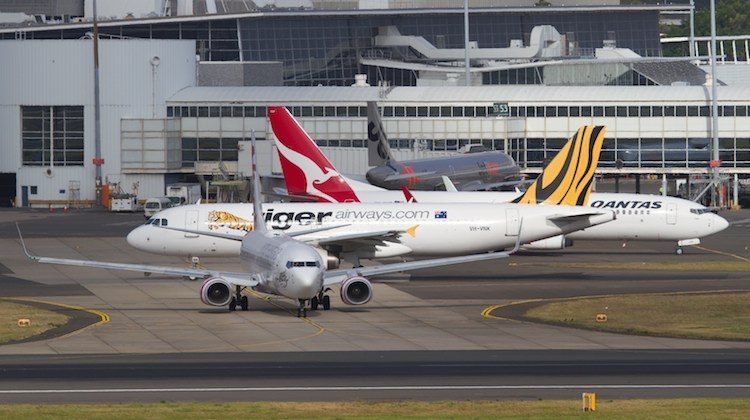
Australia’s domestic airline traffic market contracted for the fifth consecutive month in March, new figures show.
The International Air Transport Association (IATA) monthly traffic report said demand, measured by revenue passenger kilometres (RPK), in the Australian domestic market fell 3.2 per cent in March, compared with the prior corresponding period.
“RPK volumes contracted in the domestic Australia market for the fifth consecutive month,” the IATA report said.
“All told, following a period of relatively stable demand over much of last year, a downward trend in seasonally adjusted RPKs began to emerge from late-2018.”
The IATA report said capacity, measured by available seat kilometres (ASK), in the Australian domestic market was down 2.1 per cent in March, compared with the same month a year ago.
With demand falling faster than capacity, load factors were 0.9 percentage points lower at 79.3 per cent.
Australia was the only domestic market to report a reduction in RPKs in March.
More broadly, domestic passenger demand across seven key markets measured by IATA was still rising, largely on the back of developments in China and India, albeit at a slower pace.
Global RPKs on domestic services grew 4.1 per cent in March. This was below the year-on-year improvement of 6.2 per cent recorded for February.
In the United States, domestic RPKs were up 6.3 per cent in March, the strongest growth since 2016 on the back of a strong labour market and solid household consumption spending.
Growth in the domestic China market also slowed in March with RPKs up 2.9 per cent compared with March 2018, its weakest performance since early 2015.
And India’s domestic RPK growth slowed from 8.3 per cent in February to 3.1 per cent in March on the back of flight cancellations and disruptions by the suspension of operations at Jet Airways and construction work at Mumbai Airport.

Easter impact
IATA said global air passenger traffic numbers for March were impacted by the timing of Easter, which occurred in April 2019 and March 2018.
Global passenger demand rose 3.1 per cent in March, compared with the same month a year ago, IATA said. However, the exclusion of the Easter holiday period in 2019 meant it was the slowest pace growth in any month in nine years.
IATA director general and chief executive Alexandre de Juniac said the slower growth was not a bellwether for 2019.
Rather, de Juniac noted the economic backdrop had become less favourable, with the International Monetary Fund recently revising its gross domestic product (GDP) outlook downward for the fourth time in the past year to 3.3 per cent.
“Given expectations of a less supportive economic backdrop over the course of 2019, the passenger demand outlook has become a little less favourable than was expected six months ago,” de Juniac said in a statement on Wednesday.
On a seasonally-adjusted basis, the underlying growth globally had been relatively steady since October 2018 at a 4.1 per cent annualised rate, IATA said.
Industry-wide ASKS increased 4.2 per cent year-on-year in March, causing the passenger load factor to ease to 81.7 per cent, 0.9 percentage points lower than the record high for the month of March last year.
North American airlines posted a three per cent rise in international RPKs in March, compared with the prior year, down from 4.2 per cent growth in February.
On a seasonally-adjusted basis, traffic has been trending strongly upwards. Capacity climbed 2.6 per cent and the load factor was up 0.3 percentage point to 83.7 per cent.
Demand among Asia Pacific airlines climbed 1.9 per cent in March, but this was down from four per cent growth in February and the “weakest in six years or so”, IATA said. Capacity increased 3.5 per cent, while load factors fell 1.3 percentage points to 81.2 per cent.
















Craigy
says:Despite the reduction in RPKs, Qantas appears to be on track for another bumper profit. And the competition – another loss. So more cost cutting is on the way to reduce the cost base. Seems the previous attempts haven’t been as successful as hoped.